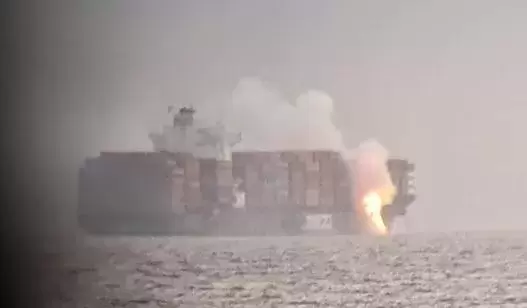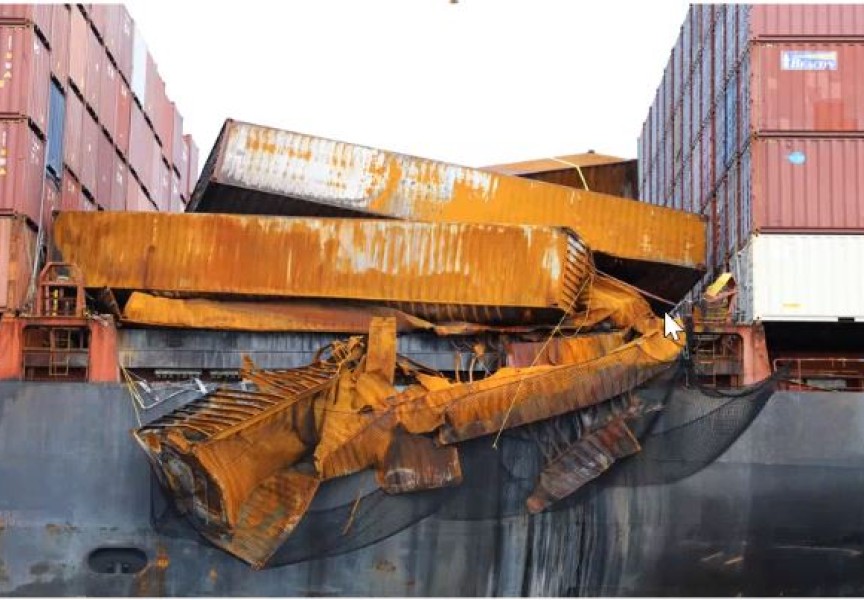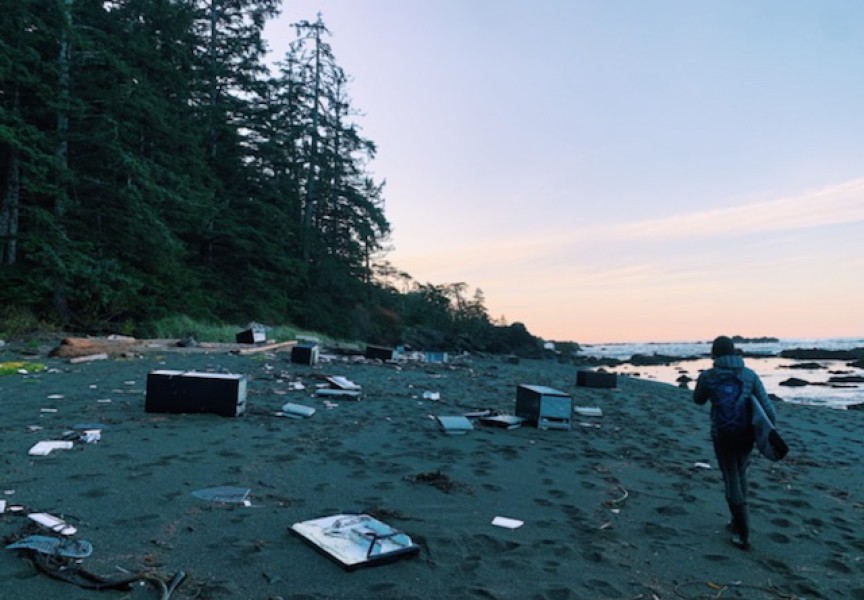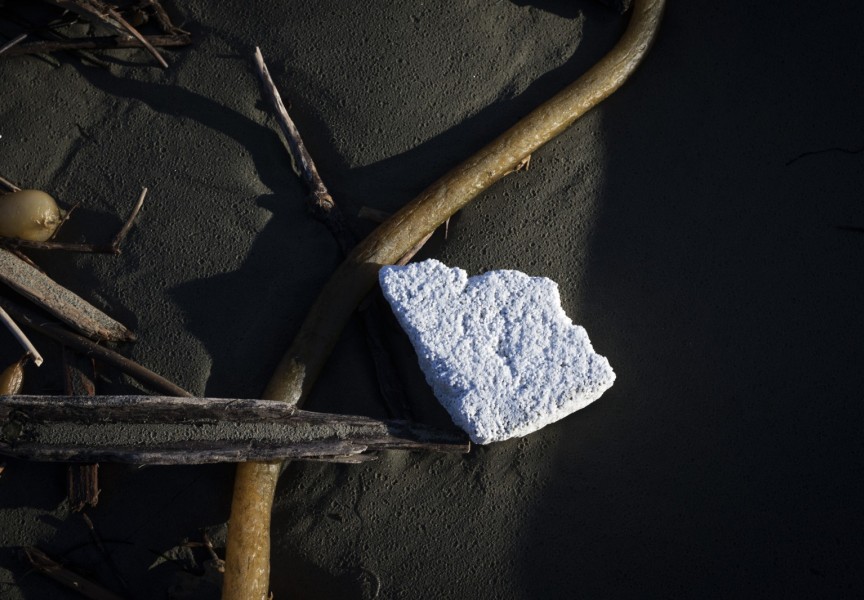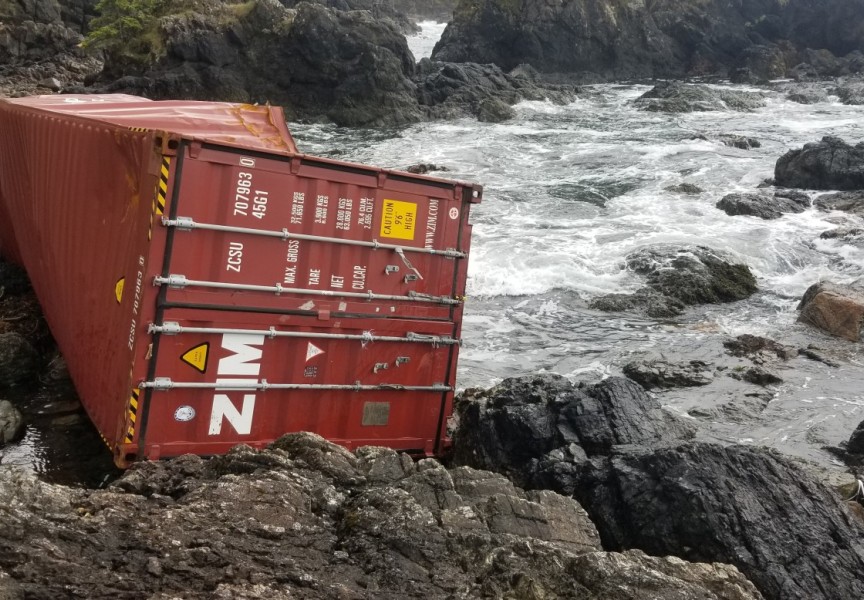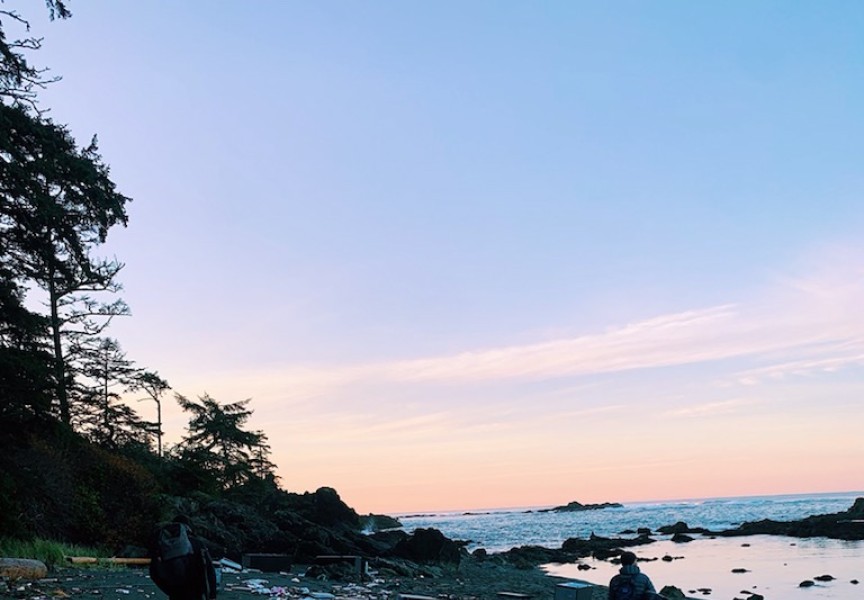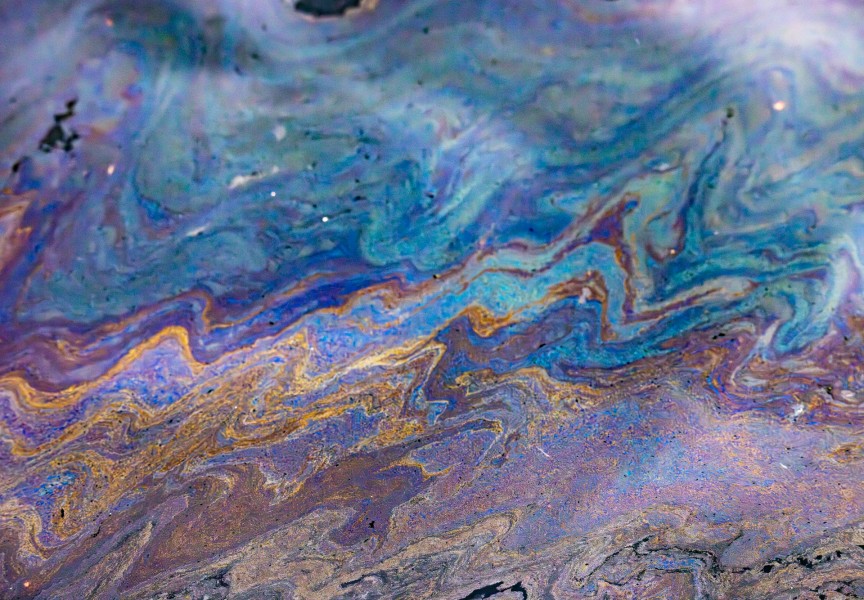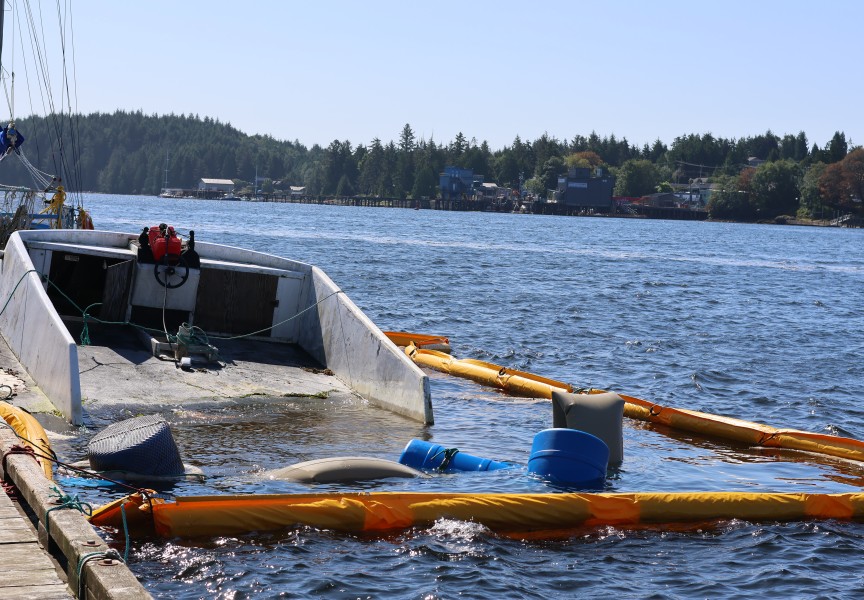After 109 shipping containers were knocked off a cargo ship near Vancouver Island on Friday, Oct. 22, communities on the west coast are left with many unanswered questions.
The number of containers has grown from the original estimation of 40. The containers went overboard when the vessel, known as MV Zim Kingston, encountered rough seas.
A container fire broke out on the ship the following day while it was anchored near Victoria. Potassium amylxanthate, a hazardous chemical widely used in the mining industry, was stored in two of the containers that caught fire, as well as two of the containers that went overboard.
Contents inside the adrift containers include Christmas decorations, sofas, poker boards, metal car parts, clothing, toys, yoga mats, stand-up paddle boards, as well as industrial parts, according to the Canadian Coast Guard.
The shipping containers’ movements are being monitored through overflights by the United States Coast Guard, Canadian Coast Guard helicopters, Transport Canada’s National Aerial Surveillance Program, as well as vessels transiting the area. The US Coast Guard also dropped a beacon (data buoy) to track the movement, according to a spokesperson for the Canadian Coast Guard.
Three containers and debris were identified at Cape Scott by a coast guard helicopter on Wednesday, said Paul Barrett, Canadian Coast Guard Planning Section Chief for Unified Command Paul Barrett, during a media briefing on Wednesday.
It is believed that some of the other containers have already sunk.
“They’re out there being battered in heavy seas,” said Mariah McCooey, Canadian Coast Guard deputy federal incident commander. “The watertight integrity is not that great.”
None of the containers have been retrieved, but the Canadian Coast Guard said ZIM Integrated Shipping Services, which operates MV Zim Kingston, has contracted U.S.-based Resolve Marine Group for salvage operations, including fire fighting and the recovery of the containers.
By law, the polluter is required to complete cleanup activities to the “satisfaction of the Canadian government,” the coast guard said in a release.
Courtenay-Alberni MP Gord Johns is calling on the federal government to hold the company accountable to recovery and clean-up efforts.
"There's a lot of anxiety and a lot of concern we're hearing from coastal people [and] from organizations that are involved in cleanups,” said Johns. “They need answers. Coastal people need answers.”
Nuu-chah-nulth Tribal Council (NTC) President Judith Sayers said that the lack of communication has been the largest concern among the 14 Nuu-chah-nulth nations that live along Vancouver Island’s west coast.
“We need better communication [and] emergency response structures so that when we're affected, we're immediately informed and involved,” said Sayers.
As of Monday, Oct. 25, Sayers said that she nor NTC’s emergency coordinator had been contacted.
Although most Nuu-chah-nulth communities have emergency plans, Sayers said that without knowing the shipping containers’ contents, she was unsure if communities were prepared with the proper safety equipment.
“How quickly can the coast guard or other HAZMAT type of services get to us?” she questioned. “There’s just that uncertainty.”
During a press briefing on Tuesday, Oct. 26 Gillian Oliver, Canadian Coast Guard advanced planning unit leader, said the coast guard is sending regular updates to all the First Nations marine liaison contacts they have established on the west coast of Vancouver Island. The coast guard has also coordinated calls with First Nations communities on the west coast of Vancouver Island, she added.
Pacheedaht First Nation (PFN) Elected Chief Jeff Jones called on the newly appointed Minister of Fisheries and Oceans Canada, Joyce Murray, and the Minister of Natural Resources Canada, Jonathan Wilkinson, to commit to accelerating a proposed Marine Safety Centre partnership with the nation on Wednesday. It comes in response to the “potentially devastating container spill.”
“The PFN originally agreed to a partnership with the Government of Canada to build a Marine Safety Centre as a part of Canada’s reconciliation initiative with the PFN, but to date the project has been mired in lack of political will to get a real proposal from Canada on the table,” said Jones, in a release. “As part of reconciliation and accommodation, we identified parcels of land for development that would enable both the Marine Safety Centre and economic diversification opportunities for PFN. We have provided detailed proposals and alternatives to the Government of Canada, but unfortunately, we have nothing to show for our years of work except more dangerous cargo spills.”
In November 2016, the Korean cargo ship Hanjin Seattle lost 35 containers near the entrance to the Straight of Juan de Fuca. Tofino residents and beach cleanup organizations were left to deal with the plastic that washed onto local beaches.
“We don't want to repeat what happened in 2016 where the federal government was pointing fingers at the company and inter departments were pointing fingers at each other,” said Johns. “There was clearly a legislative gap.”
Surfrider Foundation Canada President David Boudinot said that because of the “bureaucratic hurdles” to get the containers off the beach in 2016, the ocean tore them up and distributed Styrofoam all over the shorelines.
“The response was slow,” he said. “And that could have been prevented if they were cleaned up quicker.”
Boudinot said that unless action is taken “immediately” to remove the adrift shipping containers, a bad disaster could get much worse.
There are concerns about the containers opening and spilling their contents, much like a recent container spill of plastic pelts near Sri Lanka in June, said Boudinot.
JJ Brickett, Canadian Coast Guard federal incident commander said that it would be “an effort” to open one of the sea cans.
“[There’s] a series of bars, locks and seals that would have to be overcome,” he said.
Sensitive ecosystems are at risk should one of the containers open, said Johns.
“It can impact sea life in our waters and impact the species that we rely on for our food security, our way of life and our economy,” he said. “There's a lot of anxiety right now.”
According to the Canadian Coast Guard, an environmental unit has been established to respond to the incident.
“It is comprised of federal, provincial, municipal and First Nations experts,” the coast guard said in a release. “On a daily basis, our specialists review and advise unified command on environmental modelling, air quality data, and ecological data. The priority actions for the environmental unit include preventing environmental impacts by identifying sensitive environmental, economic and cultural sites in proximity to the MV Zim Kingston and the lost cargo.”
The sea conditions the ship was traveling in “were not unusual circumstances,” said Brickett.
As extreme weather events increase due to climate change, much like Sunday’s storm that saw the deepest low-pressure system on record for the Pacific Northwest, Boudinot said this likely won’t be an isolated event.
Sayers echoed his sentiment and questioned the safety of cargo ships in ever increasing stormy conditions.
“We understand there are no GPS trackers on these containerships,” she said. “We need to be reviewing the safety of them … there are flags that go up when these kinds of things happen.”
To report sightings of the shipping containers, the pollution reporting line can be reached at: 808 98852.


